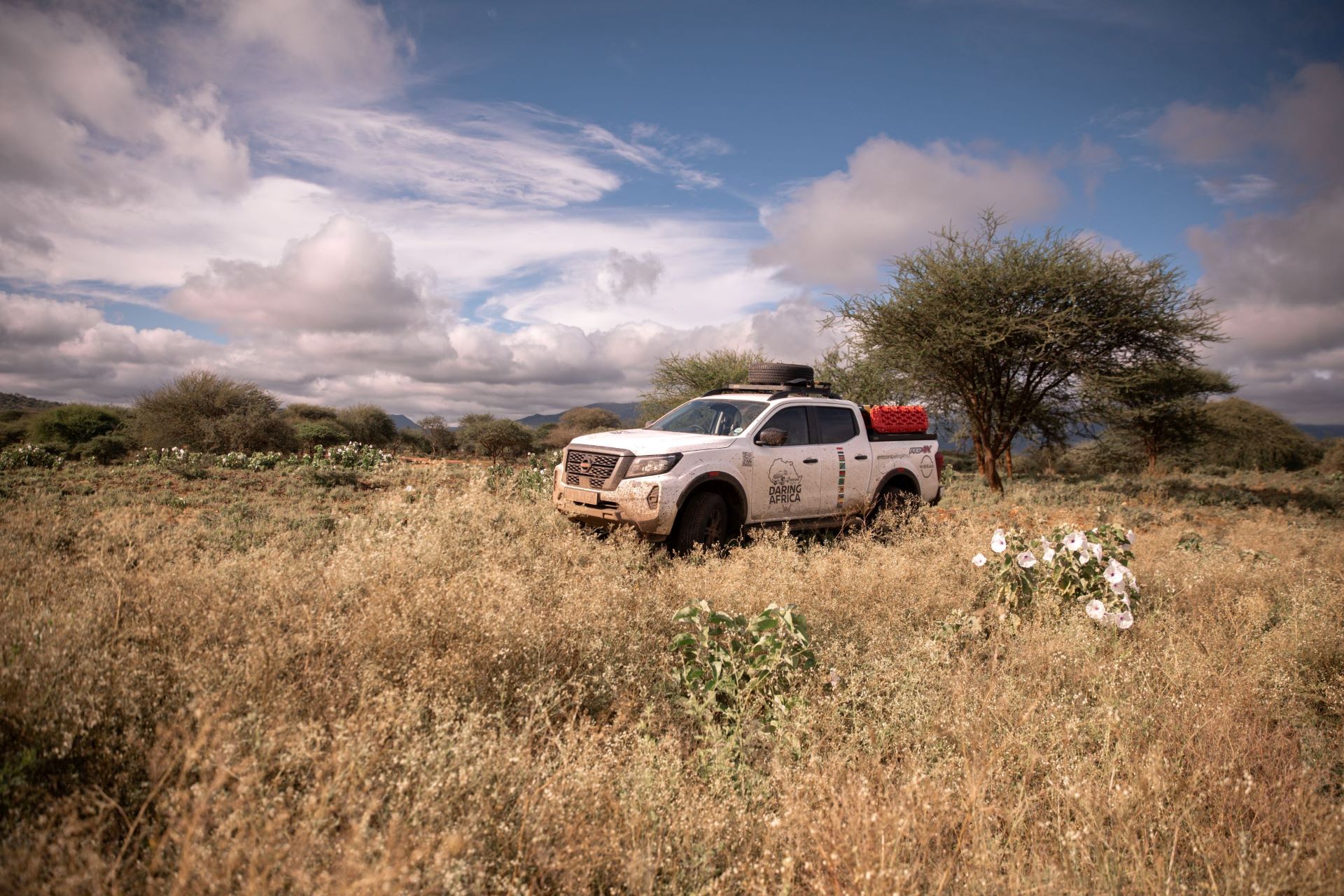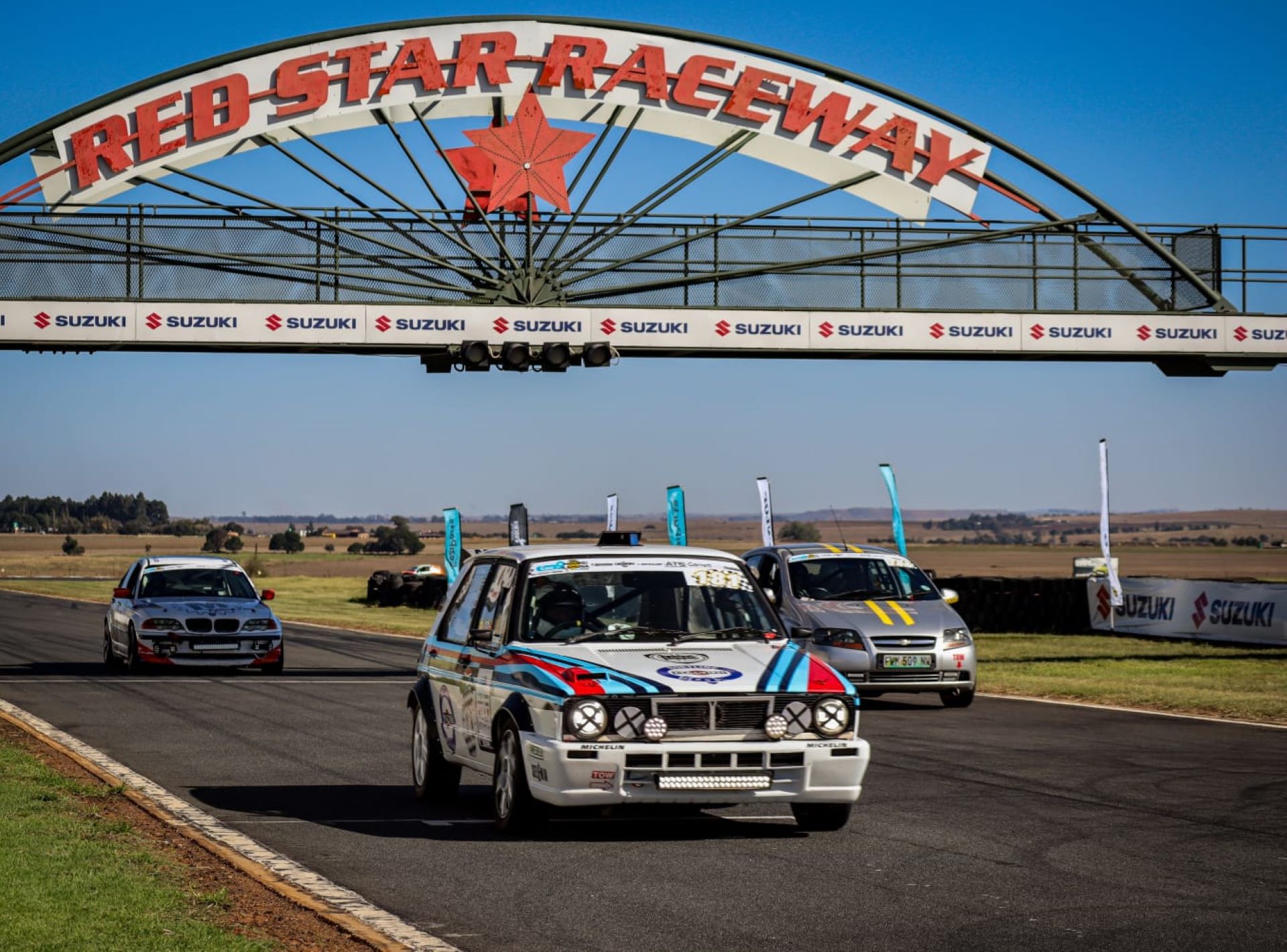A three-year project to turn a 40-year-old electric city car into a Tesla-beating dragster has climaxed with TV presenter Jonny Smith’s Flux Capacitor becoming Europe’s quickest street legal electric car.
The 1975 Enfield 8000 electric city car, capable of just 40mph when new, this weekend smashed the Tesla’s record over a quarter mile in the FIA European Finals at Santa Pod.
With the Fifth Gear presenter at the wheel, the tiny Enfield – boosted from its original 8hp to 1000hp – silently charged through the quarter mile in 10.84 seconds at 121mph, dismantling the Tesla’s record of 11.5 seconds.
“I still cannot believe what that little car is capable of,” said Jonny. “The little paper timing slip never lies, and when it revealed a 10 second pass I was so happy I kissed my crew mate Nick Farrow on the lips.
“This weekend the car not only clinched but blitzed the European record for a street legal electric car. Never in my dreams did I think the Enfield was capable of this kind of performance.”
Long before Tesla launched its supercar-killing model S P85 electric saloon, and prior to the Formula E race series, Jonny started restoring the rare but derelict Enfield.
He dubbed the car the Flux Capacitor with the idea of going Back to the Future of the electric car, and as a nod to the sponsor, insurance broker Adrian Flux.
Earlier in the year the car managed to run a 12-second quarter mile, then into the 11s.
But at Santa Pod this weekend the silent David was pitched against the piston-powered Goliaths. Jonny entered the highly contested Street Eliminator category, where some of the fastest cars compete, all with current MoTs, tax and running on street legal tyres.
In order to prove its road legal credentials, prior to the racing there is a mandatory 25-mile street cruise around the Northants countryside.
“This doesn’t sound much for normal cars, but these are vehicles treading the fine line between all-out dragsters and Sunday cruisers,” said Jonny.
“If you break down and can’t get back to the race track without outside help, you’re disqualified. Harsh, but we managed to keep our charge and complete the event.”
Qualifying with an 11.27 second quarter mile at 118mph, Jonny fitted taller axle gears to try to go even faster.
“We had two hours to recharge after the gruelling cruise before heading into race one. It wasn’t a lot of time. To be honest I was happy to have qualified at all given most of my competitors are running over 1500bhp twin turbo V8s,” said Jonny.
And then, 40 years after it was built on the Isle of Wight, the car originally designed as an electric city runabout in the midst of the 1970s oil crisis, tore up the strip in a staggering 10.84 seconds at 121mph.
Not quite 1.21 gigawatts of power, but 1900 amps and over 250 volts of electric muscle.
“This would be a serious feat for a modern supercar, let alone something 2.8 metres long that was designed for a maximum of 40 mph,” said Jonny.
“The numbers showed we’d got the thing from 0-102mph in 6.9 seconds. When new it couldn’t even do 60. They measured performance in the brochure quoting 0-30mph in 12.5 seconds. Mind you, it had 6kW of power then. Now it’s got 600kW.
“I was racing against a 2000bhp Nissan GT-R, so I knew I’d need some miracle to win. With a 10 second quarter mile in a tiny electric car in front of thousands of spectactors, I couldn’t have been happier to lose.
“While it is a very left-field project, the attention the Flux Capacitor got over the last few days is ridiculous. We had serious dyed in the wool drag racers come over and give us respect. I think – I hope – the Flux Capacitor has gone a little way to showing people that electric cars are nothing new, and that they can be charismatic and mighty fast.”
The question now is, can it go even faster?
“Maybe,” said Jonny. “I’m just chuffed to have achieved two major hurdles. Firstly completing the mandatory 25 mile street cruise around Northamptonshire without breaking down or accepting ‘outside’ help. It was tough, I won’t lie…three days before the event me and my brother were busy getting the hazard warning lights and horn to work properly!
“Then two hours later the car ran the fastest it’s ever run and consequently became Europe’s quickest street legal electric car.”
Of course, the Enfield is also tax and London congestion charge exempt.
“When I started this project I estimated a 12.5 second quarter mile, which we achieved within six runs of the car back in May,” said Jonny.
“A few months later we got into the 11s and now we’re running in the tens. And it never once tried to bite me. Despite its ludicrous proportions the car just gripped and ran straight and smooth. It’s a testament to the specialist engineers I chose to get involved with the project like Current Racing, Webster Race Engineering, BG Developments and GAS IT.
“It simply wouldn’t have been possible without the support of Adrian Flux insurance, so I’m glad I phoned them by chance to check they’d be able to insure the car before starting to build it. It feels apt that 30 years after Back to the Future my Flux Capacitor has seen 88mph and beyond.”
Background and technical specifications then and now
[youtube id=”dhVGtQEegXE” width=”100%” height=”60%” autoplay=”no” api_params=”” class=””]
1975 ENFIELD 8000 ECC (Electric City Car) history
Born during the 1970s oil crisis, British motorcycle company Enfield set up an eco car company on the Isle of Wight headed by design engineer John Ackroyd, who was later involved with the ‘Thrust 2’ land speed world record car. Seriously.
Made with an aluminium bodyshell and steel space frame (the same as Aston Martins of that time!), the rear wheel drive 8000 had its own on-board charger, run-flat tyres and even a heated windscreen.
Although it nicked a lot of bits from existing cars of its time like the headlights (Allegro), front suspension and steering (Hillman Imp), the Enfield cost two and a half times more than a Mini. Oh dear.
Its 1.72-metre wheelbase was 31cm shorter than the original Mini. Titchy dimensions and a 8hp 48-volt 6kW electric motor with 8 lead acid batteries made it the perfect city car. The Enfield could do up to 55 miles and max out at 40mph.
120 Enfield 8000s were made, 60 of which were purchased by the British Electricity Council as pool cars. My car is chassis number 003 and was supplied new to SEEBOARD (South East Electricity) in the Brighton area. Around 30 exist worldwide now.
ORIGINAL ENFIELD 8000 TECH SPEC
BODYSHELL: Handbuilt aluminium two-seater
CHASSIS: Square-section tubular steel space frame
SUSPENSION: Coil-over McPherson strut front, four-link Reliant rear axle
MOTOR: 8hp / 6kw / 150amps
WHEELS: 10-inch Mini wheels
BRAKES: Mini front, Reliant rear drums
BATTERIES: 8 x 12v 55-amp hour lead acid batteries
TOP SPEED: 40mph
PERFORMANCE: Erm. Well, 0-30mph in 12.5 seconds
RANGE: 35-55 miles, depending on climate and quantity of hills
WEIGHT: 975kg (a lot for such a midget – 308kg was batteries)
LENGTH: 2.84m / 112″ (a Mini was 3.05m / 120″)
WHEELBASE: 1.725m / 68″ (a Mini was 2.04m / 80.3″)
FUEL: 240v mains Economy Seven
The Flux Capacitor (e)mission statement was to resurrect a forgotten British electric relic and drag (race) it into the 21st century using modern leccy technology.
Why? To be Europe’s fastest street legal electric vehicle. It was never going to be the prettiest.
It took 18 months to find this flood damaged car and three years to transform from 6kW city car into 600kW silent-but-violent midget.
Hyperdrive Innovation built the lithium-ion battery pack and battery management system to fit under the bonnet. The latter keeps the cells balanced and safe during charge/discharge. A drive-by-wire controller (like an ECU) is mounted under the passenger seat which is tuned via laptop, where you can adjust volts (top speed) and amps (torque).
There’s no gearbox. Just squirt and go, as elec motors produce maximum torque from 0 rpm. Perfect for drag racing.
It will get from 0-100mph in about 7 seconds. It’s as fast as many supercars on the quarter mile, despite being stupidly short.
Jonny’s Flux Capacitor is tax exempt, immune from London’s CC and (hopefully) proof that eco cars can charismatically kick some amps.
FLUX CAPACITOR ENFIELD 8000 TECH SPEC
BODYSHELL: Aluminium, painted by Roadhouseretro.com in Lambretta GP ‘Yellow Ochre’, Plastics4Performance.com Lexan windows, glassfibre moulded bumpers
CHASSIS: Custom roll cage, trans tunnel altered to house twin motors & ‘mini-tubbed’ rear.
SUSPENSION: AVO shocks on Hillman Imp A-arms, rose-jointed four-link rear suspension with narrowed Ford 9-inch LSD axle with 6-inch long (!) prop shaft, removable wheelie bars.
MOTORS: 2 x 9-inch DC Current Racing motors rated for 2000 amps @ 170v, 5500rpm max. No gearbox. Direct drive.
WHEELS: British Wolfrace slot mags refurbished by Wicked Wheels, 12×5″ front, 14×7″ rear
BRAKES: Bespoke front disc conversion with AP Racing calipers by BG Developments.
BATTERIES: 144 x 4.2v military grade lithium-ion Kokam ‘pouch’ cells (connected in 2 parallel and 72 series) split into into 3 battery packs. Originally used as engine starter and mini-gun batteries for a Bell SuperCobra attack helicopter. Discharge 378v/1600amps in a 10 second pulse. Battery packs and BMS (Battery Management System) by Hyperdrive Innovation.
PERFORMANCE: 530kW, 1100lb ft+, 700+bhp. 0-60 in 3 seconds. Quarter mile in 11 secs. Top speed 120mph (est), battery range approximately 30 miles (still testing).
WEIGHT: 882kg (minus driver)
FUEL Electricity supplied by npower (240v, 32-amp)



